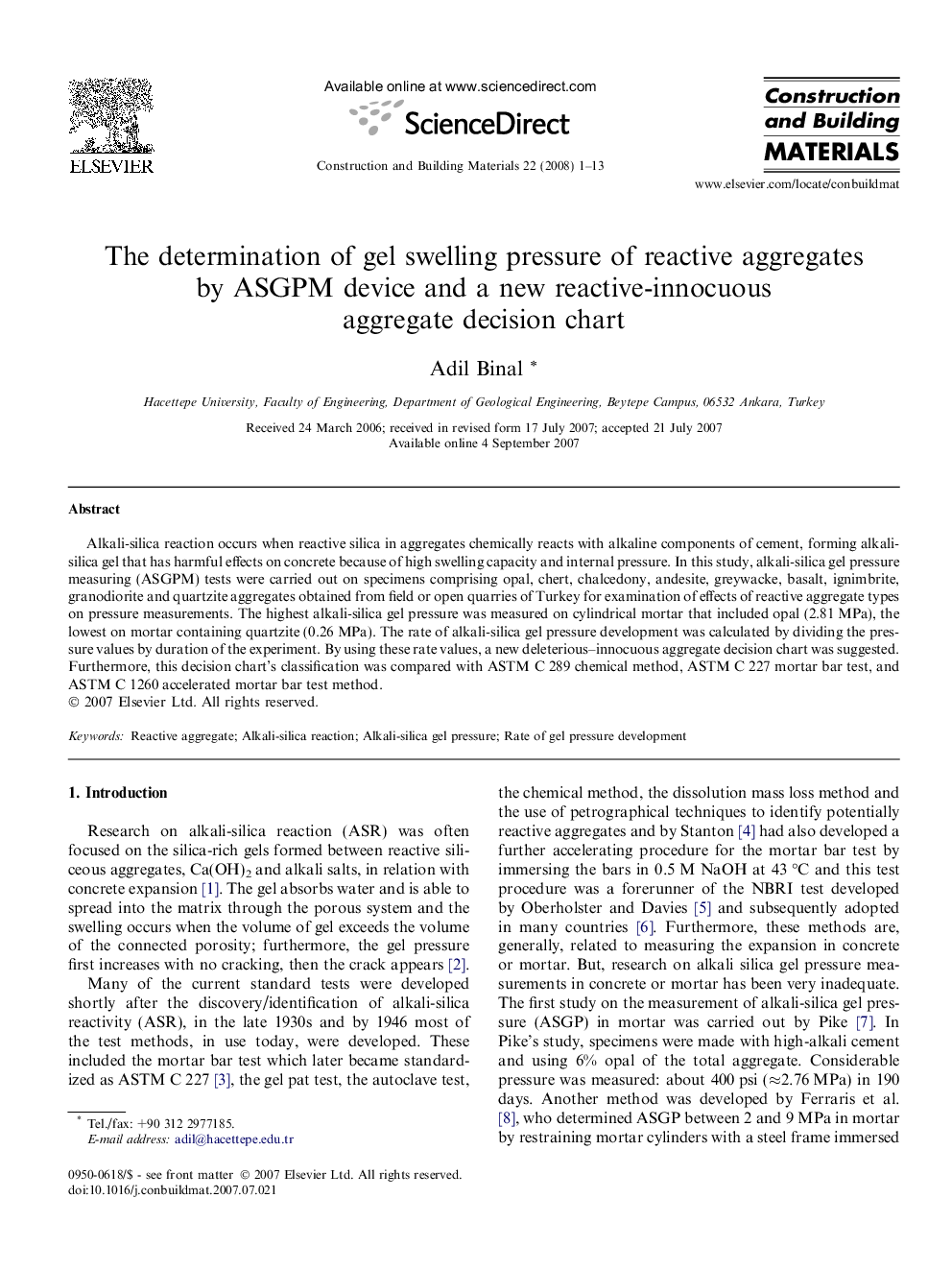| Article ID | Journal | Published Year | Pages | File Type |
|---|---|---|---|---|
| 261011 | Construction and Building Materials | 2008 | 13 Pages |
Alkali-silica reaction occurs when reactive silica in aggregates chemically reacts with alkaline components of cement, forming alkali-silica gel that has harmful effects on concrete because of high swelling capacity and internal pressure. In this study, alkali-silica gel pressure measuring (ASGPM) tests were carried out on specimens comprising opal, chert, chalcedony, andesite, greywacke, basalt, ignimbrite, granodiorite and quartzite aggregates obtained from field or open quarries of Turkey for examination of effects of reactive aggregate types on pressure measurements. The highest alkali-silica gel pressure was measured on cylindrical mortar that included opal (2.81 MPa), the lowest on mortar containing quartzite (0.26 MPa). The rate of alkali-silica gel pressure development was calculated by dividing the pressure values by duration of the experiment. By using these rate values, a new deleterious–innocuous aggregate decision chart was suggested. Furthermore, this decision chart’s classification was compared with ASTM C 289 chemical method, ASTM C 227 mortar bar test, and ASTM C 1260 accelerated mortar bar test method.
